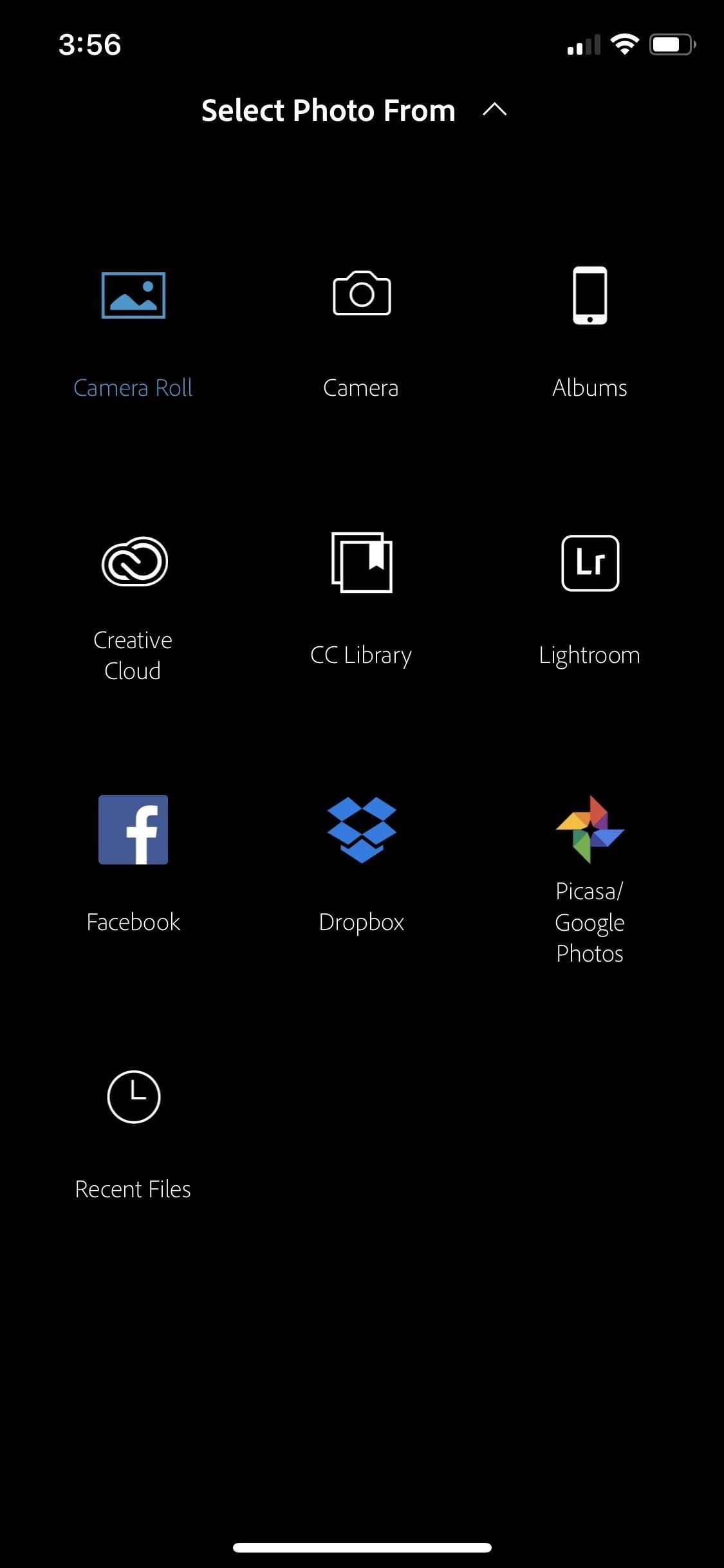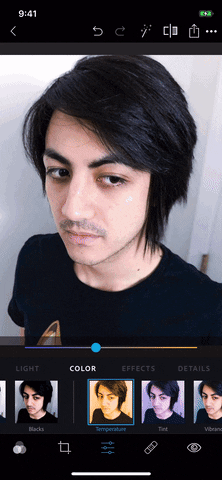Make Your Selfies Look Professional with This Simple Lighting Adjustment Trick in Photoshop Express

Picture this: You finally get that awesome angle, the perfect selfie. You can't wait to post it on your Instagram, except there's one problem — it looks a little flat and the colors just seem off. Maybe it's the lights? Or maybe your new smartphone camera isn't as good as you thought? How are your friends getting those beautiful photos they've been posting on social media?
The answer is simple: editing. Unless you've got perfect lighting conditions, your iPhone or Android phone likely won't take the shot you envisioned — especially if you're using the front-facing camera. But you can achieve a professional-looking photo by making a few simple lighting adjustments with Adobe Photoshop Express, available on iOS and Android.
Take a Photo with Decent Lighting
The lighting for your selfie doesn't have to be perfect, just lit well enough to capture all of your facial features. Unless you're snapping the image with zero artificial or natural light, it shouldn't be hard to do. While you can still make some improvements on a photo that's pretty dark, you'll have a difficult time achieving the full effect of this adjustment.
Also, make sure your photo remains unfiltered. You'll be able to add any desired filters after this adjustment is complete, whether in Photoshop Express, Instagram, VSCO, or another photo-editing app that has filters.
Step 2Select Your Photo in Photoshop Express
When you open Photoshop Express, you'll see the photo selection screen right away unless you were recently using the app. If that's the case, hit the back arrow (iOS) or "X" symbol (Android) in the top left, which should return you to the photo selector. The app is set up to allow you to select a photo directly from your device's main photo gallery by default.
If you tap the drop-down arrow next to "Camera Roll" (iOS) or "All Photos" (Android) at the top, you can select a different place from which you're importing. On iOS, you can choose from Facebook, Dropbox, or Google Photos. On both iOS and Android, you can take a photo with your camera or choose a photo from any albums on your device, as well as from Lightroom, Creative Cloud, and CC Library.
Adobe allows you to connect all of its products through what they call the Creative Cloud, two of the options just mentioned. That means anything uploaded on to your cloud from any Adobe app can be accessed from a full Adobe product on your computer or mobile devices. However, though Photoshop Express is free, the Creative Cloud Library comes with a paid subscription through Adobe.
Step 3Adjust the Contrast
Once you've selected your photo, select the adjustments tool icon (three sliding bars on iOS, two on Android) in the toolbar at the bottom. First, tap the "Contrast" option, which allows you to make adjustments to the tone range of an image. Contrast is basically the difference in brightness between the light and dark areas, determining the number of shades seen.
Slide this bar to the right to increase the contrast, which will bring out the darker tones. You can also choose to slide the bar left if that's the look you're going for. This will decrease the darker tones, leaving you with a more vintage look.
Adjust the Highlights & Shadows
Next, we'll use the "Highlights" and "Shadows" options, located directly next to each other. These two adjustment commands work together to balance out the lighting in the foreground and background of the image, in our case, to help the subject stand out in a selfie.
These two tools aren't just for lightening and darkening the whole image, they actually look at the surrounding pixels (or "local neighborhood") of the highlights and shadows that are visible. When you adjust the levels of highlights and shadows, there's some major behind-the-scenes work going on.
If the highlights and shadows on your selfie are either too light or too dark, adjust each tool's slider until the light and dark parts of the image are more balanced. It's not an exact science, just eyeball it.
Step 5Adjust the Temperature
Finally, scroll right to find the "Temperature" option. This command changes the color of your image by introducing either warm tones or cool tones. Depending on the photo, this bar will be adjusted differently to achieve a more neutral tone. In my example, the temperature was modified to be slightly cooler. You may need to adjust your bars to different degrees based on the type of lighting the selfie was shot in.
Step 6Readjust Them if Needed
After completing all of the adjustments, you can still go back and play with each of the options mentioned until you're 100% satisfied with your results.
Step 7Check & Save
To check your edits, tap the tool up top that looks like a square chopped in half. This is the before-and-after tool and will toggle between your original image and your edited image. It's a good way to see all that you accomplished, as well as help determine if more fine-tuning is necessary.
Once you've decided you're finished, there are two different way in which you can save your edited selfie. Your first option is to select the back arrow (iOS) or "X" (Android) in the top left. You'll see a pop-up menu to either "Save" or "Don't Save." Either way, you'll be taken back to the image selection screen.
The second option is to tap the share icon next to the before-and-after tool. From here, you can decide where you want to save the image. You can choose your camera roll, upload to social media, send to a different Adobe product, or send it in a message. From this screen, you can also change the size and quality of your selfie before saving by tapping the appropriate items below the image preview.
Must Check Out Posts:
Best 21 Stock Photo Websites to Download Free Stock Photos 2019
Erase unwanted objects and perfect your amazing photos!
Remove objects from photos with Photo Eraser is almost as easy as taking a shot. Now you can use this tool to erase undesirable objects from your pictures, such as tourists, watermarks, logos, texts, blemishes and other unwanted things without real photo-editing skills required at all.
The most powerful and professional data recovery software for Android that can restore deleted or lost contacts, photos, videos, audios, SMS, call logs, WhatsApp chat, Viber messages from any Android devices due to accidental deletion, virus attack, formatting. It supports all popular Android smartphones and tablets like Samsung, HTC, LG, Huawei, Motorola, Nexus, etc. In the meantime, you will be guided step by step if you never used this kind of tool before.










Comments
Post a Comment